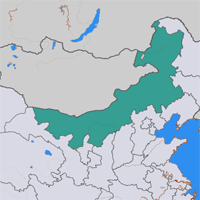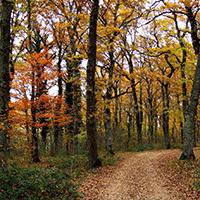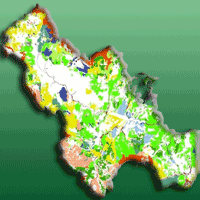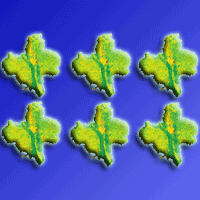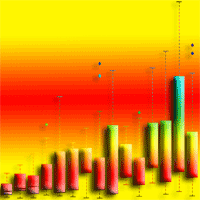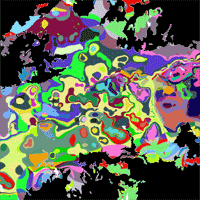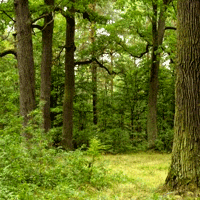The established pattern of land use in the Inner Mongolia Autonomous Region is being challenged by China’s rapid overall economic transition. The provision of required land-related functions and services is subject to land management decision making. Scientific research can offer substantial support for this decision making by providing evidence of the interaction between land management and land function services. This paper’s objective was to identify the most important land use functions and services from a local perspective and to compare these functions and services with the land-related research topics addressed in the scientific literature. For this purpose, we conducted a workshop with local stakeholders (land use decision makers) in the West Ujimqin Banner (Inner Mongolia) as a specific case study and performed a comprehensive survey of the Inner Mongolian land use research published in international scientific journals. Our analysis indicated that the stakeholders assigned particular importance to social land use functions, such as jobs, as well as environmental land use functions and ecosystem processes. In contrast, the research topics were primarily concerned with natural science. We discussed possible shortcomings in the research agenda by emphasising and contrasting local stakeholder perspectives with the research topics and concluded that without bottom-up stakeholder participation, there would be a mismatch between the research interests of land use scientists and the needs of stakeholders. Future research that can contribute to local policy making with the aim of meeting the objectives of a multifunctional land use concept is required.
Keywords
, , ,
Citation
König HJ, Podhora A, Helming K, Zhen L, Wang C, Wübbeke J, Baumeister T, Du B, Yan H (2014). Confronting international research topics with stakeholders on multifunctional land use: the case of Inner Mongolia, China. iForest 7: 403-413. - doi: 10.3832/ifor1172-007
Academic Editor
Marco Borghetti
Paper history
Received: Oct 31, 2013
Accepted: Nov 14, 2013
First online: May 19, 2014
Publication Date: Dec 01, 2014
Publication Time: 6.20 months
© SISEF - The Italian Society of Silviculture and Forest Ecology 2014
Open Access
This article is distributed under the terms of the Creative Commons Attribution-Non Commercial 4.0 International (https://creativecommons.org/licenses/by-nc/4.0/), which permits unrestricted use, distribution, and reproduction in any medium, provided you give appropriate credit to the original author(s) and the source, provide a link to the Creative Commons license, and indicate if changes were made.

Breakdown by View Type
(Waiting for server response...)
Article Usage
Total Article Views: 62012
(from publication date up to now)
Breakdown by View Type
HTML Page Views: 51041
Abstract Page Views: 5096
PDF Downloads: 4414
Citation/Reference Downloads: 37
XML Downloads: 1424
Web Metrics
Days since publication: 4244
Overall contacts: 62012
Avg. contacts per week: 102.28
Article Citations
Article citations are based on data periodically collected from the Clarivate Web of Science web site
(last update: Mar 2025)
Total number of cites (since 2014): 12
Average cites per year: 1.00
Publication Metrics
by Dimensions ©
Articles citing this article
List of the papers citing this article based on CrossRef Cited-by.
(1)
Adelle C, Hertin J, Jordan A (2006)Sustainable development “outside” the European Union: what role for impact assessment? European Environment 16: 57-72.
CrossRef |
Gscholar
(2)
Ao M, Ito M, Ito K, Yun JF, Miura R, Tominaga T (2008)Floristic compositions of Inner Mongolian grasslands under different land-use conditions. Grassland Science 54: 173-178.
CrossRef |
Gscholar
(3)
Ao M, Miura R, Tominaga T (2009)Root and rhizome systems of perennial grasses grown in Inner Mongolian grassland, China. Grassland Science 55: 187-192.
CrossRef |
Gscholar
(4)
Bai Y, Han X, Wu J, Chen Z, Li L (2004)Ecosystem stability and compensatory effects in the Inner Mongolia grassland. Nature 431: 181-184.
CrossRef |
Gscholar
(5)
Bai Y, Wu J, Clark CM, Naeemz S, Pan Q, Huang J, Hang L, Han X (2010)Tradeoffs and thresholds in the effects of nitrogen addition on biodiversity and ecosystem functioning: Evidence from inner Mongolia Grasslands. Global Change Biology 16: 358-372.
CrossRef |
Gscholar
(6)
Bennett MT, Mehta A, Xu J (2011)Incomplete property rights, exposure to markets and the provision of environmental services in China. China Economic Review 22: 485-498.
CrossRef |
Gscholar
(7)
Brogaard S, Li X (2005)Agricultural performance on marginal land in Eastern Inner Mongolia, China - Development in the pre- and post-1978 reform periods. GeoJournal 64: 163-175.
CrossRef |
Gscholar
(8)
Brogaard S, Xueyong Z (2002)Rural reforms and changes in land management and attitudes: A case study from Inner Mongolia, China. Ambio 31: 219-225.
CrossRef |
Gscholar
(9)
Brogaard S, Runnström M, Seaquist JW (2005)Primary production of Inner Mongolia, China, between 1982 and 1999 estimated by a satellite data-driven light use efficiency model. Global and Planetary Change 45: 313-332.
CrossRef |
Gscholar
(10)
Buckley R, Ollenburg C, Zhong L (2008)Cultural landscape in Mongolian tourism. Annals of Tourism Research 35: 47-61.
CrossRef |
Gscholar
(11)
Cao L, Tian W, Ni B, Zhang Y, Wang P (2002)Preliminary study of airborne particulate matter in a Beijing sampling station by instrumental neutron activation analysis. Atmospheric Environment 36: 1951-1956.
CrossRef |
Gscholar
(12)
Chang IS, Zhao J, Yin X, Wu J, Jia Z, Wang L (2011)Comprehensive utilizations of biogas in Inner Mongolia, China. Renewable and Sustainable Energy Reviews 15: 1442-1453.
CrossRef |
Gscholar
(13)
Chen S, Bai Y, Lin G, Han X (2005)Variations in life-form composition and foliar carbon isotope discrimination among eight plant communities under different soil moisture conditions in the Xilin River Basin, Inner Mongolia, China. Ecological Research 20: 167-176.
CrossRef |
Gscholar
(14)
Chen J, Huang D, Shiyomi M, Hori Y, Yamamura Y (2007a)Spatial heterogeneity and diversity of vegetation at the landscape level in Inner Mongolia, China, with special reference to water resources. Landscape and Urban Planning 82: 222-232.
CrossRef |
Gscholar
(15)
Chen S, Bai Y, Lin G, Huang J, Han X (2007b)Isotopic carbon composition and related characters of dominant species along an environmental gradient in Inner Mongolia, China. Journal of Arid Environments 71: 12-28.
CrossRef |
Gscholar
(16)
Chen J, Hori Y, Yamamura Y, Shiyomi M, Huang D (2008)Spatial heterogeneity and diversity analysis of macrovegetation in the Xilingol region, Inner Mongolia, China, using the beta distribution. Journal of Arid Environments 72: 1110-1119.
CrossRef |
Gscholar
(17)
Chen W, Wolf B, Brüggemann N, Butterbach-Bahl K, Zheng X (2011)Annual emissions of greenhouse gases from sheepfolds in Inner Mongolia. Plant and Soil 340: 291-301.
CrossRef |
Gscholar
(18)
Chen W, Zheng X, Chen Q, Wolf B, Butterbach-Bahl K, Brüggemann N, Lin S (2013)Effects of increasing precipitation and nitrogen deposition on CH
4 and N
2O fluxes and ecosystem respiration in a degraded steppe in Inner Mongolia, China. Geoderma 192: 335-340.
CrossRef |
Gscholar
(19)
Costanza R, Daly HE (1992)Natural capital and sustainable development. Conservation Biology 6: 37-46.
CrossRef |
Gscholar
(20)
Davies AR (1999)Where do we go from here? Environmental focus groups and planning policy formation. Local Environment 4: 295-316.
CrossRef |
Gscholar
(21)
de Groot RS, Alkemade R, Braat L, Hein L, Willemen L (2010)Challenges in integrating the concept of ecosystem services and values in landscape planning, management and decision making. Ecological Complexity 7: 260-272.
CrossRef |
Gscholar
(22)
Dickinson D, Webber M (2007)Environmental resettlement and development, on the Steppes of inner Mongolia, PRC. Journal of Development Studies 43: 537-561.
CrossRef |
Gscholar
(23)
Dong J, Liu J, Yan H, Tao F, Kuang W (2011a)Spatio-temporal pattern and rationality of land reclamation and cropland abandonment in Mid-eastern Inner Mongolia of China in 1990-2005. Environmental Monitoring and Assessment 179: 137-153.
CrossRef |
Gscholar
(24)
Dong J, Tao F, Zhang G (2011b)Trends and variation in vegetation greenness related to geographic controls in middle and eastern Inner Mongolia, China. Environmental Earth Sciences 62: 245-256.
CrossRef |
Gscholar
(25)
Dong J, Liu J, Zhang G, Basara JB, Greene S, Xiao X (2013)Climate change affecting temperature and aridity zones: a case study in Eastern Inner Mongolia, China from 1960-2008. Theoretical and Applied Climatology 113 (3-4): 561-572.
CrossRef |
Gscholar
(26)
ESPON (2012)EU-LUPA European land use patterns. Applied Research 2013/1/8, Annexes to Inception Report, v. 3 Dec 2010, European Union, Luxembourg, pp. 42.
Online |
Gscholar
(27)
Feng XM, Zhao YS (2011)Grazing intensity monitoring in Northern China steppe: integrating CENTURY model and MODIS data. Ecological Indicators 11: 175-182.
CrossRef |
Gscholar
(28)
Gao T, Su L, Ma Q, Li H, Li X, Yu X (2003)Climatic analyses on increasing dust storm frequency in the springs of 2000 and 2001 in inner Mongolia. International Journal of Climatology 23: 1743-1755.
CrossRef |
Gscholar
(29)
Gao YZ, Giese M, Lin S, Sattelmacher B, Zhao Y, Brueck H (2008)Belowground net primary productivity and biomass allocation of a grassland in Inner Mongolia is affected by grazing intensity. Plant and Soil 307: 41-50.
CrossRef |
Gscholar
(30)
Gao YZ, Chen Q, Lin S, Giese M, Brueck H (2011)Resource manipulation effects on net primary production, biomass allocation and rain-use efficiency of two semiarid grassland sites in Inner Mongolia, China. Oecologia 165: 855-864.
CrossRef |
Gscholar
(31)
Gao T, Jiang X, Hu Y (2013)Climate condition of the significant precipitation decrease over the middle-eastern region of Inner Mongolia, China in recent 10 years (2001-2010). Theoretical and Applied Climatology 111: 265-274.
CrossRef |
Gscholar
(32)
Gao T, Si Y, Yan W, Gao L, Yu X, Xiao S (2014)Typical synoptic types of spring effective precipitation in Inner Mongolia, China. Meteorological Applications 21 (2): 330-339.
CrossRef |
Gscholar
(33)
Grimble R, Wellard K (1997)Stakeholder methodologies in natural resource management: a review of principles, contexts, experiences and opportunities. Agricultural Systems 55: 173-193.
CrossRef |
Gscholar
(34)
Hansen MH (2006)In the footsteps of the communist party: dilemmas and strategies, In: “Doing fieldwork in China” (Heimer M, Thøgersen S eds). University of Hawai’i Press, Honolulu, USA, pp. 81-95.
Gscholar
(35)
Hao Y, Wang Y, Huang X, Cui X, Zhou X, Wang S, Niu H, Jiang G (2007)Seasonal and interannual variation in water vapor and energy exchange over a typical steppe in Inner Mongolia, China. Agricultural and Forest Meteorology 146: 57-69.
CrossRef |
Gscholar
(36)
Hao Y, Wang Y, Mei X, Huang X, Cui X, Zhou X, Niu H (2008)CO
2, H
2O and energy exchange of an Inner Mongolia steppe ecosystem during a dry and wet year. Acta Oecologica 33: 133-143.
CrossRef |
Gscholar
(37)
He J, Kuhn NJ, Zhang XM, Zhang XR, Li HW (2009)Effects of 10 years of conservation tillage on soil properties and productivity in the farming-pastoral ecotone of Inner Mongolia, China. Soil Use and Management 25: 201-209.
CrossRef |
Gscholar
(38)
He JJ, Cai QG, Cao WQ (2013)Wind tunnel study of multiple factors affecting wind erosion from cropland in agro-pastoral area of Inner Mongolia, China. Journal of Mountain Science 10: 68-74.
CrossRef |
Gscholar
(39)
Helming K, Bach H, Dilly O, Hüttl R, König B, Kuhlmann T, Pérez-Soba M, Sieber S, Smeets P, Tabbush P, Tscherning K, Wascher D, Wiggering H (2008)Ex ante impact assessment of land use changes in European regions - the SENSOR approach. In: “Sustainability Impact Assessment of Land Use Changes” (Helming K, Pérez-Soba M, Tabbush P eds). Springer, Berlin-Heidelberg, Germany, pp. 77-105.
CrossRef |
Gscholar
(40)
Helming K, Diehl K, Bach H, Dilly O, König B, Kuhlman T, Pérez-Soba M, Sieber S, Tabbush P, Tscherning K, Wascher D, Wiggering H (2011)Ex ante impact assessment of policies affecting land use. Part A. Analytical framework. Ecology and Society 16 (1): 1-17.
Online |
Gscholar
(41)
Hoffmann C, Funk R, Li Y, Sommer M (2008a)Effect of grazing on wind driven carbon and nitrogen ratios in the grasslands of Inner Mongolia. Catena 75: 182-190.
CrossRef |
Gscholar
(42)
Hoffmann C, Funk R, Sommer M, Li Y (2008b)Temporal variations in PM10 and particle size distribution during Asian dust storms in Inner Mongolia. Atmospheric Environment 42: 8422-8431.
CrossRef |
Gscholar
(43)
Hoffmann C, Funk R, Wieland R, Li Y, Sommer M (2008c)Effects of grazing and topography on dust flux and deposition in the Xilingele grassland, Inner Mongolia. Journal of Arid Environments 72: 792-807.
CrossRef |
Gscholar
(44)
Hoffmann C, Funk R, Reiche M, Li Y (2011)Assessment of extreme wind erosion and its impacts in Inner Mongolia, China. Aeolian Research 3: 343-351.
CrossRef |
Gscholar
(45)
Holst J, Liu C, Brüggemann N, Butterbach-Bahl K, Zheng X, Wang Y, Han S, Yao Z, Yue J, Han X (2007a)Microbial N turnover and N-oxide (N
2O/NO/NO
2) fluxes in semi-arid grassland of Inner Mongolia. Ecosystems 10: 623-634.
CrossRef |
Gscholar
(46)
Holst J, Liu C, Yao Z, Brüggemann N, Zheng X, Han X, Butterbach-Bahl K (2007b)Importance of point sources on regional nitrous oxide fluxes in semi-arid steppe of Inner Mongolia, China. Plant and Soil 296: 209-226.
CrossRef |
Gscholar
(47)
Inner Mongolia Statistics Bureau (2012)Inner Mongolia Statistical Yearbook. China Statistics Press, Beijing, China, pp. 789. [in Chinese]
Gscholar
(48)
Jiang H (2005)Grassland management and views of nature in China since 1949: regional policies and local changes in Uxin Ju, inner Mongolia. Geoforum 36: 641-653.
CrossRef |
Gscholar
(49)
Jiang H (2006)Decentralization, ecological construction, and the environment in post-reform China: case study from Uxin Banner, Inner Mongolia. World Development 34: 1907-1921.
CrossRef |
Gscholar
(50)
Jiang G, Han X, Wu J (2006)Restoration and management of the Inner Mongolia grassland require a sustainable strategy. Ambio 35: 269-270.
CrossRef |
Gscholar
(51)
Jun Li W, Ali SH, Zhang Q (2007)Property rights and grassland degradation: a study of the Xilingol Pasture, Inner Mongolia, China. Journal of Environmental Management 85: 461-470.
CrossRef |
Gscholar
(52)
Kang X, Hao Y, Li C, Cui X, Wang J, Rui Y, Niu H, Wang Y (2011)Modeling impacts of climate change on carbon dynamics in a steppe ecosystem in Inner Mongolia, China. Journal of Soils and Sediments 11: 562-576.
CrossRef |
Gscholar
(53)
König HJ, Uthes S, Schuler J, Zhen L, Purushothaman S, Suarma U, Sghaier M, Makokha S, Helming K, Sieber S, Chen L, Brouwer F, Morris J, Wiggering H (2012a)Regional impact assessment of land use scenarios in developing countries using the FoPIA approach: findings from five case studies. Journal of Environmental Management 127: S56-S64.
CrossRef |
Gscholar
(54)
König HJ, Zhen L, Helming K, Uthes S, Yang L, Cao X, Wiggering H (2012b)Assessing the impact of the sloping land conversion programme on rural sustainability in Guyuan, western China. Land Degradation and Development (early view).
CrossRef |
Gscholar
(55)
Lee Kwan C (2010)The Inner Mongolia autonomous region: a major role in China’s renewable energy future. Utilities Policy 18: 46-52.
CrossRef |
Gscholar
(56)
Li W, Huntsinger L (2011)China’s grassland contract policy and its impacts on herder ability to benefit in Inner Mongolia: tragic feedbacks. Ecology and Society 16 (2): 1-14.
Gscholar
(57)
Li FR, Zhang H, Zhao LY, Shirato Y, Wang XZ (2003)Pedoecological effects of a sand-fixing poplar (
Populus simonii Carr.) forest in a desertified sandy land of Inner Mongolia, China. Plant and Soil 256: 431-442.
CrossRef |
Gscholar
(58)
Li FR, Zhao LY, Zhang H, Zhang TH, Shirato Y (2004)Wind erosion and airborne dust deposition in farmland during spring in the Horqin Sandy Land of eastern Inner Mongolia, China. Soil and Tillage Research 75: 121-130.
CrossRef |
Gscholar
(59)
Li FR, Kang LF, Zhang H, Zhao LY, Shirato Y, Taniyama I (2005)Changes in intensity of wind erosion at different stages of degradation development in grasslands of Inner Mongolia, China. Journal of Arid Environments 62: 567-585.
CrossRef |
Gscholar
(60)
Li C, Hao X, Zhao M, Han G, Willms WD (2008a)Influence of historic sheep grazing on vegetation and soil properties of a Desert Steppe in Inner Mongolia. Agriculture, Ecosystems and Environment 128: 109-116.
CrossRef |
Gscholar
(61)
Li YH, Wang W, Liu ZL, Jiang S (2008b)Grazing gradient versus restoration succession of
Leymus chinensis (Trin.) Tzvel. grassland in inner Mongolia. Restoration Ecology 16: 572-583.
CrossRef |
Gscholar
(62)
Li Y, Zhao H, Zhao X, Zhang T, Li Y, Cui J (2011)Effects of grazing and livestock exclusion on soil physical and chemical properties in desertified sandy grassland, Inner Mongolia, northern China. Environmental Earth Sciences 63: 771-783.
CrossRef |
Gscholar
(63)
Li A, Wu J, Huang J (2012)Distinguishing between human-induced and climate-driven vegetation changes: a critical application of RESTREND in inner Mongolia. Landscape Ecology 27: 969-982.
CrossRef |
Gscholar
(64)
Lichtfouse E, Hamelin M, Navarrete M, Debaeke P, Henri A (2010)Emerging agroscience. Agronomy for Sustainable Development 30: 1-10.
CrossRef |
Gscholar
(65)
Lin Y, Han G, Zhao M, Chang SX (2010)Spatial vegetation patterns as early signs of desertification: a case study of a desert steppe in Inner Mongolia, China. Landscape Ecology 25: 1519-1527.
CrossRef |
Gscholar
(66)
Lin L, Dickhoefer U, Müller K, Wang C, Glindemann T, Hao J, Wan H, Schönbach P, Gierus M, Taube F, Susenbeth A (2012)Growth of sheep as affected by grazing system and grazing intensity in the steppe of Inner Mongolia, China. Livestock Science 144: 140-147.
CrossRef |
Gscholar
(67)
Liu C, Holst J, Brüggemann N, Butterbach-Bahl K, Yao Z, Yue J, Han S, Han X, Krümmelbein J, Horn R, Zheng X (2007)Winter-grazing reduces methane uptake by soils of a typical semi-arid steppe in Inner Mongolia, China. Atmospheric Environment 41: 5948-5958.
CrossRef |
Gscholar
(68)
Liu J, Wu J, Liu F, Han X (2012)Quantitative assessment of bioenergy from crop stalk resources in Inner Mongolia, China. Applied Energy 93: 305-318.
CrossRef |
Gscholar
(69)
Liu X, Wang Y, Peng J, Braimoh AK, Yin H (2013)Assessing vulnerability to drought based on exposure, sensitivity and adaptive capacity: a case study in middle Inner Mongolia of China. Chinese Geographical Science 23: 13-25.
CrossRef |
Gscholar
(70)
Lu N, Chen S, Wilske B, Sun G, Chen J (2011)Evapotranspiration and soil water relationships in a range of disturbed and undisturbed ecosystems in the semi-arid Inner Mongolia, China. Journal of Plant Ecology 4: 49-60.
CrossRef |
Gscholar
(71)
Lü XT, Han XG (2010)Nutrient resorption responses to water and nitrogen amendment in semi-arid grassland of Inner Mongolia, China. Plant and Soil 327: 481-491.
CrossRef |
Gscholar
(72)
Miao H, Chen S, Chen J, Zhang W, Zhang P, Wei L, Han X, Lin G (2009)Cultivation and grazing altered evapotranspiration and dynamics in Inner Mongolia steppes. Agricultural and Forest Meteorology 149: 1810-1819.
CrossRef |
Gscholar
(73)
Nan Z (2005)The grassland farming system and sustainable agricultural development in China. Grassland Science 51: 15-19.
CrossRef |
Gscholar
(74)
National Development and Reform Commission (2011)National plan of priority ecological functional zones. National Development and Reform Commission, Beijing, China, pp. 132. [in Chinese]
Gscholar
(75)
National Statistics Bureau (2010)China Statistical Yearbook. China Statistics Press, Beijing, China, pp. 1032. [in Chinese]
Gscholar
(76)
National Statistics Bureau (2011)China Statistical Yearbook. China Statistics Press, Beijing, China, pp. 1058.
Gscholar
(77)
Nederhof AJ (2005)Bibliometric monitoring of research performance in the social sciences and the humanities: a review. Scientometrics 66: 81-100.
CrossRef |
Gscholar
(78)
Peng Q, Dong Y, Qi Y, Xiao S, He Y, Ma T (2011a)Effects of nitrogen fertilization on soil respiration in temperate grassland in Inner Mongolia, China. Environmental Earth Sciences 62: 1163-1171.
CrossRef |
Gscholar
(79)
Peng Q, Qi Y, Dong Y, Xiao S, He Y (2011b)Soil nitrous oxide emissions from a typical semiarid temperate steppe in inner Mongolia: effects of mineral nitrogen fertilizer levels and forms. Plant and Soil 342: 345-357.
CrossRef |
Gscholar
(80)
Podhora A, Helming K, Adenäuer L, Heckelei T, Kautto P, Reidsma P, Rennings K, Turnpenny J, Jansen J (2013)The policy-relevancy of impact assessment tools: Evaluating nine years of European research funding. Environmental Science and Policy 31: 85-95.
CrossRef |
Gscholar
(81)
Pérez-Soba M, Petit S, Jones L, Bertrand N, Briquel V, Omodei-Zorini L, Contini C, Helming K, Farrington JH, Mossello MT, Wascher D, Kienast F, Groot R (2008)Land use functions - a multifunctionality approach to assess the impact of land use changes on land use sustainability. Springer, Berlin-Heidelberg, Germany, pp. 375-404.
Gscholar
(82)
Qi YC, Dong YS, Liu JY, Domroes M, Geng YB, Liu LX, Liu XR, Yang X (2007)Effect of the conversion of grassland to spring wheat field on the CO2 emission characteristics in Inner Mongolia, China. Soil and Tillage Research 94: 310-320.
CrossRef |
Gscholar
(83)
Qi YC, Dong YS, Jin Z, Peng Q, Xiao SS, He YT (2010)Spatial heterogeneity of soil nutrients and respiration in the desertified grasslands of inner mongolia, China. Pedosphere 20: 655-665.
CrossRef |
Gscholar
(84)
Qi Y, Dong Y, Peng Q, Xiao S, He Y, Liu X, Sun L, Jia J, Yang Z (2012)Effects of a conversion from grassland to cropland on the different soil organic carbon fractions in Inner Mongolia, China. Journal of Geographical Sciences 22: 315-328.
CrossRef |
Gscholar
(85)
Qiao G, Zhao L, Klein KK (2009)Water user associations in Inner Mongolia: factors that influence farmers to join. Agricultural Water Management 96: 822-830.
CrossRef |
Gscholar
(86)
Reed MS, Graves A, Dandy N, Posthumus H, Hubacek K, Morris J, Prell C, Quinn CH, Stringer LC (2009)Who’s in and why? A typology of stakeholder analysis methods for natural resource management. Journal of Environmental Management 90: 1933-1949.
CrossRef |
Gscholar
(87)
Reiche M, Funk R, Zhang Z, Hoffmann C, Reiche J, Wehrhan M, Li Y, Sommer M (2012)Application of satellite remote sensing for mapping wind erosion risk and dust emission-deposition in Inner Mongolia grassland, China. Grassland Science 58: 8-19.
CrossRef |
Gscholar
(88)
Reszkowska A, Krümmelbein J, Peth S, Horn R, Zhao Y, Gan L (2011)Influence of grazing on hydraulic and mechanical properties of semiarid steppe soils under different vegetation type in Inner Mongolia, China. Plant and Soil 340: 59-72.
CrossRef |
Gscholar
(89)
Rounsevell MDA, Pedroli B, Erb KH, Gramberger M, Busck AG, Haberl H, Kristensen S, Kuemmerle T, Lavorel S, Lindner M, Lotze-Campen H, Metzger MJ, Murray-Rust D, Popp A, Pérez-Soba M, Reenberg A, Vadineanu A, Verburg PH, Wolfslehner B (2012)Challenges for land system science. Land Use Policy 29: 899-910.
CrossRef |
Gscholar
(90)
Schönbach P, Wan H, Schiborra A, Gierus M, Bai Y, Müller K, Glindemann T, Wang C, Susenbeth A, Taube F (2009)Short-term management and stocking rate effects of grazing sheep on herbage quality and productivity of Inner Mongolia steppe. Crop and Pasture Science 60: 963-974.
CrossRef |
Gscholar
(91)
Schösser B, Helming K, Wiggering H (2010)Assessing land use change impacts - a comparison of the SENSOR land use function approach with other frameworks. Journal of Land Use Science 5: 159-178.
CrossRef |
Gscholar
(92)
Shao C, Chen J, Li L, Xu W, Chen S, Gwen T, Xu J, Zhang W (2008)Spatial variability in soil heat flux at three Inner Mongolia steppe ecosystems. Agricultural and Forest Meteorology 148: 1433-1443.
CrossRef |
Gscholar
(93)
Shiyomi M, Akiyama T, Wang S, Yiruhan Ailikun Hori Y, Chen Z, Yasuda T, Kawamura K, Yamamura Y (2011)A grassland ecosystem model of the Xilingol steppe, Inner Mongolia, China. Ecological Modelling 222: 2073-2083.
CrossRef |
Gscholar
(94)
State Council (2011)Recommendations of the State Council on sound and fast development of the economy and society of Inner Mongolia. Chinese State Council, Beijing, China, pp. 1-26.
Gscholar
(95)
Su YZ, Li YL, Zhao HL (2006)Soil properties and their spatial pattern in a degraded sandy grassland under post-grazing restoration, Inner Mongolia, northern China. Biogeochemistry 79: 297-314.
CrossRef |
Gscholar
(96)
Suškevics M (2012)Legitimacy analysis of multi-level governance of biodiversity: evidence from 11 case studies across the EU. Environmental Policy and Governance 22: 217-237.
CrossRef |
Gscholar
(97)
Taylor JL (2006)Negotiating the grassland: the policy of pasture enclosures and contested resource use in Inner Mongolia. Human Organization 65: 374-386.
Gscholar
(98)
Turner BL, Lambin EF, Reenberg A (2007)The emergence of land change science for global environmental change and sustainability. Proceedings of the National Academy of Sciences USA 104: 20666-20671.
CrossRef |
Gscholar
(99)
United Nations (1987)Our common future (chapt. 2). Towards sustainable development.
Online |
Gscholar
(100)
Wan H, Bai Y, Schönbach P, Gierus M, Taube F (2011)Effects of grazing management system on plant community structure and functioning in a semiarid steppe: scaling from species to community. Plant and Soil 340: 215-226.
CrossRef |
Gscholar
(101)
Wang ZP, Han XG (2005)Diurnal variation in methane emissions in relation to plants and environmental variables in the Inner Mongolia marshes. Atmospheric Environment 39: 6295-6305.
CrossRef |
Gscholar
(102)
Wang S, Wang Y, Schnug E, Haneklaus S, Fleckenstein J (2002)Effects of nitrogen and sulphur fertilization on oats yield, quality and digestibility and nitrogen and sulphur metabolism of sheep in the Inner Mongolia steppes of China. Nutrient Cycling in Agroecosystems 62: 195-202.
CrossRef |
Gscholar
(103)
Wang ZP, Han XG, Wang GG, Song Y, Gulledge J (2008)Aerobic methane emission from plants in the Inner Mongolia steppe. Environmental Science and Technology 42: 62-68.
CrossRef |
Gscholar
(104)
Wang YF, Cui XY, Hao YB, Mei XR, Yu GR, Huang XZ, Kang XM, Zhou XQ (2011)The fluxes of CO
2 from grazed and fenced temperate steppe during two drought years on the Inner Mongolia Plateau, China. Science of the Total Environment. 410 (411): 182-190.
Gscholar
(105)
Wei Y, Chen D, Hu K, Willett IR, Langford J (2009)Policy incentives for reducing nitrate leaching from intensive agriculture in desert oases of Alxa, Inner Mongolia, China. Agricultural Water Management 96: 1114-1119.
CrossRef |
Gscholar
(106)
Wiggering H, Müller K, Werner A, Helming K (2003)The concept of multifunctionality in sustainable land development. In: “Sustainable Development of Multifunctional Landscapes” (Helming K, Wiggering H eds). Springer, Berlin, Germany, pp. 3-18.
Gscholar
(107)
Wiggering H, Dalchow C, Glemnitz M, Helming K, Müller K, Schultz A, Stachow U, Zander P (2006)Indicators for multifunctional land use - linking socio-economic requirements with landscape potentials. Ecological Indicators 6: 238-249.
CrossRef |
Gscholar
(108)
Wilske B, Lu N, Wei L, Chen S, Zha T, Liu C, Xu W, Noormets A, Huang J, Wei Y, Chen J, Zhang Z, Ni J, Sun G, Guo K, McNulty S, John R, Han X, Lin G, Chen J (2009)Poplar plantation has the potential to alter the water balance in semiarid Inner Mongolia. Journal of Environmental Management 90: 2762-2770.
CrossRef |
Gscholar
(109)
Wu D, Dai F, Yan Y, Liu X, Fu X (2011)The environmental and economic influence of coal-electricity integration exploitation in the Xilingol League. Shengtai Xuebao/ Acta Ecologica Sinica 31: 5055-5060.
Gscholar
(110)
Xiao LB, Fang XQ, Ye Y (2013)Reclamation and revolt: social responses in eastern Inner Mongolia to flood/drought-induced refugees from the north China plain 1644-1911. Journal of Arid Environments 88: 9-16.
CrossRef |
Gscholar
(111)
Xu W (2004)The changing dynamics of land-use change in rural China: a case study of Yuhang, Zhejiang Province. Environment and Planning A 36: 1595-1615.
CrossRef |
Gscholar
(112)
Xu X, Duan X, Sun H, Sun Q (2011)Green space changes and planning in the capital region of China. Environmental Management 47: 456-467.
CrossRef |
Gscholar
(113)
Yin RS, Yin GP (2010)China’s primary programs of terrestrial ecosystem restoration: initiation, implementation, and challenges. Environmental Management 45: 429-441.
CrossRef |
Gscholar
(114)
Zhang W, Skarpe C (1996)Small-scale vegetation dynamics in semi-arid steppe in inner Mongolia. Journal of Arid Environments 34: 421-439.
CrossRef |
Gscholar
(115)
Zhang W (1998)Changes in species diversity and canopy cover in steppe vegetation in Inner Mongolia under protection from grazing. Biodiversity and Conservation 7: 1365-1381.
CrossRef |
Gscholar
(116)
Zhang X, Gu S, Liu W, Gan L (2001)Wind energy technology development and diffusion: a case study of Inner Mongolia, China. Natural Resources Forum 25: 33-42.
CrossRef |
Gscholar
(117)
Zhang TH, Zhao HL, Li SG, Li FR, Shirato Y, Ohkuro T, Taniyama I (2004)A comparison of different measures for stabilizing moving sand dunes in the Horqin Sandy Land of Inner Mongolia, China. Journal of Arid Environments 58: 203-214.
CrossRef |
Gscholar
(118)
Zhang LX, Yang ZF, Chen GQ (2007a)Emergy analysis of cropping-grazing system in Inner Mongolia autonomous region, China. Energy Policy 35: 3843-3855.
CrossRef |
Gscholar
(119)
Zhang MA, Borjigin E, Zhang H (2007b)Mongolian nomadic culture and ecological culture: On the ecological reconstruction in the agro-pastoral mosaic zone in northern China. Ecological Economics 62: 19-26.
CrossRef |
Gscholar
(120)
Zhang WL, Chen SP, Chen J, Wei L, Han XG, Lin GH (2007c)Biophysical regulations of carbon fluxes of a steppe and a cultivated cropland in semiarid Inner Mongolia. Agricultural and Forest Meteorology 146: 216-229.
CrossRef |
Gscholar
(121)
Zhang X, Sun T, Zhang J (2009)The role of land management in shaping arid/semi-arid landscapes: the case of the Catholic church (CICM) in western Inner Mongolia from the 1870s (late Qing Dynasty) to the 1940s (Republic of China). Geographical Research 47: 24-33.
CrossRef |
Gscholar
(122)
Zhao HL, Liu RT (2013)The “bug island” effect of shrubs and its formation mechanism in Horqin Sand Land, Inner Mongolia. Catena 105: 69-74.
CrossRef |
Gscholar
(123)
Zhao HL, Li SG, Zhang TH, Ohkuro T, Zhou RL (2004)Sheep gain and species diversity in sandy grassland, Inner Mongolia. Journal of Range Management 57: 187-190.
CrossRef |
Gscholar
(124)
Zhao HL, Zhao XY, Zhou RL, Zhang TH, Drake S (2005a)Desertification processes due to heavy grazing in sandy rangeland, Inner Mongolia. Journal of Arid Environments 62: 309-319.
CrossRef |
Gscholar
(125)
Zhao WZ, Xiao HL, Liu ZM, Li J (2005b)Soil degradation and restoration as affected by land use change in the semiarid Bashang area, northern China. Catena 59: 173-186.
CrossRef |
Gscholar
(126)
Zhao HL, Yi XY, Zhou RL, Zhao XY, Zhang TH, Drake S (2006a)Wind erosion and sand accumulation effects on soil properties in Horqin sandy farmland, Inner Mongolia. Catena 65: 71-79.
CrossRef |
Gscholar
(127)
Zhao HL, Zhou RL, Zhang TH, Zhao XY (2006b)Effects of desertification on soil and crop growth properties in Horqin sandy cropland of Inner Mongolia, north China. Soil and Tillage Research 87: 175-185.
CrossRef |
Gscholar
(128)
Zhao HL, Cui JY, Zhou RL, Zhang TH, Zhao XY, Drake S (2007a)Soil properties, crop productivity and irrigation effects on five croplands of Inner Mongolia. Soil and Tillage Research 93: 346-355.
CrossRef |
Gscholar
(129)
Zhao HL, Zhou RL, Su YZ, Zhang H, Zhao LY, Drake S (2007b)Shrub facilitation of desert land restoration in the Horqin Sand Land of Inner Mongolia. Ecological Engineering 31: 1-8.
CrossRef |
Gscholar
(130)
Zhao Y, Peth S, Krümmelbein J, Horn R, Wang Z, Steffens M, Hoffmann C, Peng X (2007c)Spatial variability of soil properties affected by grazing intensity in Inner Mongolia grassland. Ecological Modelling 205: 241-254.
CrossRef |
Gscholar
(131)
Zhao HL, He YH, Zhou RL, Su YZ, Li YQ, Drake S (2009a)Effects of desertification on soil organic C and N content in sandy farmland and grassland of Inner Mongolia. Catena 77: 187-191.
CrossRef |
Gscholar
(132)
Zhao W, Chen SP, Han XG, Lin GH (2009b)Effects of long-term grazing on the morphological and functional traits of Leymus chinensis in the semiarid grassland of Inner Mongolia, China. Ecological Research 24: 99-108.
CrossRef |
Gscholar
(133)
Zhao Y, Peth S, Horn R, Krümmelbein J, Ketzer B, Gao Y, Doerner J, Bernhofer C, Peng X (2010)Modeling grazing effects on coupled water and heat fluxes in Inner Mongolia grassland. Soil and Tillage Research 109: 75-86.
CrossRef |
Gscholar
(134)
Zhao Y, Wu P, Hu YG, Zhang ZS (2011)Plant species diversity in farmland drainage ditches in hetao irrigation region, Inner Mongolia. Chinese Journal of Ecology 30: 2797-2802.
Gscholar
(135)
Zhen L, Ochirbat B, Lv Y, Wei YJ, Liu XL, Chen JQ, Yao ZJ, Li F (2010)Comparing patterns of ecosystem service consumption and perceptions of range management between ethnic herders in Inner Mongolia and Mongolia. Environmental Research Letters 5: 015001.
CrossRef |
Gscholar
(136)
Zhen L, Deng X, Wei Y, Jiang O, Lin Y, Helming K, Wang C, König HJ (2014)Future land use and food security scenarios for the Guyuan district of remote western China. iForest (early view).
CrossRef |
Gscholar
(137)
Zhizhong W, Wen D (2008)Pastoral nomad rights in Inner Mongolia. Nomadic Peoples 12: 13-33.
CrossRef |
Gscholar
(138)
Zweig D (1992)Urbanizing rural China: bureaucratic authority and local autonomy, In: “Bureaucracy, Politics, and Decision Making in Post-Mao China” (Lieberthal KG, Lampton DM eds). University of California Press, Berkeley, Los Angeles, USA, pp. 334-363.
Gscholar
